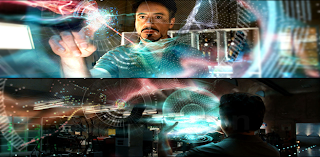Thursday, November 3, 2011
NU6 paper by JCB - 3d books
Cutting Edge & Novel E-Publishing
By
JCB
R090209
Some say that civilization owes its survival to books. And thanks to the painstaking process of hand copying all these materials, civilization survived the Dark Ages and moved into the age of the Renaissance. Without books to ensure the transfer of knowledge, modern civilization would have become history yesterday. Books, therefore, will always be essential to the progress and survival of man.
Nowadays, books are taking a new form. From being hardbound, they are now being published electronically or digitally. And with this new format, it would not be difficult transferring knowledge from one generation to another. At the same time, the new format brings promise. The author sees an opportunity especially in the Philippines. No local publishing company has fully embraced the advantages of digital publishing.
But, the author doesn't plan to strictly follow the footsteps of current digital publishers abroad who transfer current hardbound content to digital format. That's not how the author wants to do business. He wants to pursue a more advanced business idea, a novel one. And that is to come up with a digitally published book possessing the following features: completely interactive, has 3D capabilities and can project 4D holograms. At this point, there's no way to fully approximate the author's idea. He is limited by current technology. But, illustration wise the image below comes close:
The picture is a scene from Iron Man 2 and it approximates the author's vision, albeit in a grander scale. The scene in the movie essentially shows how learning can benefit from a fully interactive platform. If books are fitted with this technology, episodes of history will virtually come to life before the eyes of the student. Also, lovers of the classics can actually see 4-D depictions of Oliver Twist, Silas Marner, Great Expectations, and 1984. Watching scientists like Jonas Salk and Robert Oppenheimer will be a treat for science enthusiasts. Most of all, philosophers will enjoy conversing with interactive holograms of Friedrich Nietzsche, Jean Paul Sarte, and Immanuel Kant. Intriguing indeed.
Everything mentioned in the paragraph above sounds promising, but the question remains whether they are feasible.
Recent developments in hologram technology indicate that science fiction can become reality in the next few years. And with this probability, it wouldn't be farfetched that e-publishing can accommodate the same innovation. All it takes is for a dreamer to think about it, and the author is the one doing that. This whole essay is the author's attempt to provide the world with an audacious, novel and new business idea: one that is completely out of the box.
All in all, e-publishing is here to stay and there's an apparent opportunity that is coming with it. Aside from ensuring that knowledge will reach more people than ever before, the chance to make a decent profit out of it is apparent, too. A new frontier is waiting to be conquered.4
Chosen Source
Subscribe to:
Post Comments (Atom)
















0 comments:
Post a Comment